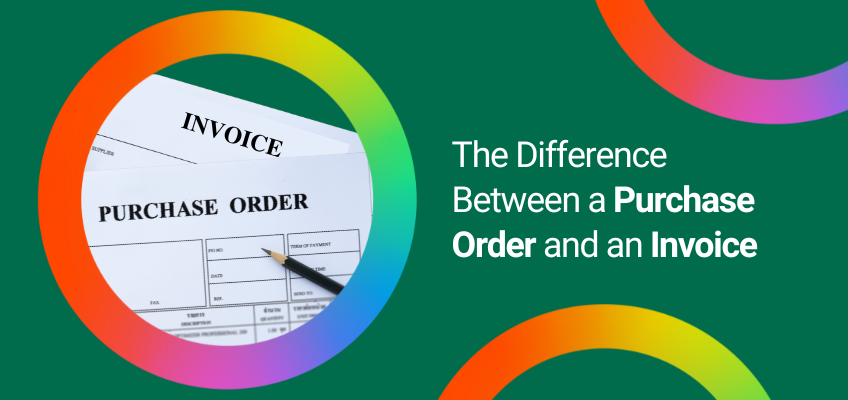
Purchase order vs invoice: how to spot the difference
Are you a small business owner looking to manage your finances more effectively? One key aspect of financial management is understanding the difference between purchase orders and invoices. While both are essential for recording transactions and managing cash flow, they serve different purposes in the purchasing process.
A purchase order is a document issued by a buyer to a supplier outlining the details of the goods or services they require, such as the quantity, price, and delivery date. It helps the buyer keep track of their purchases, manage their inventory, and ensure timely delivery of goods or services.
For instance, if a business needs to purchase office supplies from a supplier, it can issue a purchase order specifying the required type and quantity of supplies, the agreed price, and the delivery date. Once the supplier receives the purchase order, they can prepare it and send it to the buyer.
On the other hand, an invoice is a document issued by a seller to a buyer requesting payment for goods or services rendered. It serves as a transaction record and includes details such as the itemized list of goods or services, the total amount due, and the payment terms.
Understanding the purpose of purchase orders and invoices
If a business hires a freelancer to design a website, the freelancer would issue an invoice once the work is completed, detailing the project’s scope, the amount owed, and the payment deadline. Once the buyer receives the invoice, they can review it and make payment according to the agreed terms.
Understanding the difference between purchase orders and invoices is crucial for keeping track of expenses, inventory, and payments. Using purchase orders and invoices effectively allows small business owners to manage their finances more efficiently and avoid confusion or disputes with suppliers or buyers.
Payoneer can help streamline this process by providing a platform for creating and managing purchase orders and invoices and facilitating secure, timely payments. With Payoneer, small business owners like yourself can focus on growing operations, knowing that your financial transactions are always handled professionally.
The difference between purchase order and invoice explained
As a small business owner, invoicing is essential to managing your finances. While you may be able to delegate some invoice requirements and record-keeping to your accountant or bookkeeper, understanding the difference between purchase orders and invoices is critical to effective financial management.
A purchase order is a legally binding document issued by a buyer to a supplier detailing the goods or services to be purchased, the agreed price, and the delivery date. The purpose of a purchase order is to provide a record of the transaction and ensure that the buyer receives the goods or services they require. An example would be a restaurant issuing a purchase order specifying the quantity, price, and delivery date of the ingredients they need.
In contrast, an invoice is a document issued by a seller to a buyer requesting payment for goods or services rendered. The purpose of an invoice is to provide a record of the transaction and ensure that the seller receives payment for their goods or services.
An invoice typically includes details such as the itemized list of goods or services provided, the amount due, and the payment terms. For example, a marketing agency would issue an invoice once the services are completed, specifying the amount owed, the payment deadline, and other relevant details.
It’s important to note that a purchase order and an invoice are not interchangeable documents. A purchase order is issued before the goods or services are delivered, while an invoice is issued after the goods or services are delivered. Additionally, a purchase order serves as a request for goods or services, while an invoice is a payment request.
Understanding the difference between purchase orders and invoices is crucial for effective financial management, as it allows small business owners to keep track of their expenses, inventory, and payments.
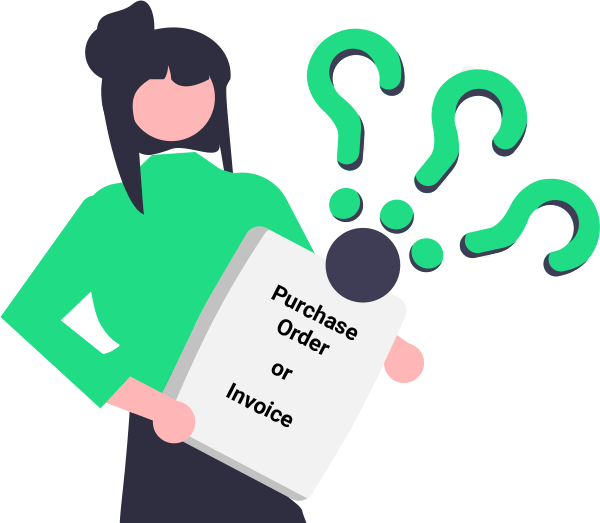

Recap: Knowing when to use a purchase order versus an invoice is crucial for effective financial management. A purchase order is issued by the buyer to the supplier before delivery, while an invoice is issued after delivery by the seller to the buyer to request payment. Use a purchase order when requesting goods or services and an invoice to request payment for goods or services provided. Understanding these differences helps avoid disputes and ensure timely payments and deliveries.
Examples of purchase orders and invoices in action
- A restaurant wants to purchase ingredients from a supplier. The restaurant issues a purchase order to the supplier outlining the type and quantity of ingredients, the agreed price, and the delivery date. Once the supplier receives the purchase order, they can prepare it and send it to the restaurant. Once the ingredients are delivered, the restaurant can issue an invoice to the supplier requesting payment for the ingredients received.
- A marketing agency provides social media advertising services to a client. The agency issues an invoice to the client once the services are completed, detailing the project scope, the amount owed, and the payment deadline. Once the client receives the invoice, they can review it and make payment according to the agreed terms.
- A construction company needs to purchase materials from a supplier. The company issues a purchase order to the supplier outlining the type & quantity of materials required, the agreed price, and the delivery date. Once the supplier receives the purchase order, they can prepare it and send it to the construction company. Once the materials are delivered, the construction company can issue an invoice to the supplier requesting payment for the materials received.
What does a purchase order look like?
Have you ever wondered what a purchase order looks like? First, a buyer sends a document to a seller to confirm their intention to purchase goods and services. Once the seller accepts and confirms the purchase order, it becomes a legally binding contract of sale.
Purchase orders are essential because they provide a transaction record and ensure that both parties are on the same page. They also help to prevent misunderstandings and disputes between the buyer and seller.
So, what’s included in a purchase order? Typically, it will have the buyer’s and seller’s names and addresses, a description of the goods or services being purchased, the quantity and price of the items, the delivery date, and the payment terms. Sometimes, other details, such as warranties or returns policies, are also included.
There are a few different purchase orders, such as standard purchase orders for one-time purchases, blanket purchase orders for ongoing purchases, and contract purchase orders for long-term purchases. Purchase orders can be created manually or using software and sent electronically or by mail.
Understanding purchase orders is essential to managing your business finances, so ensure you know what they look like and how they work!
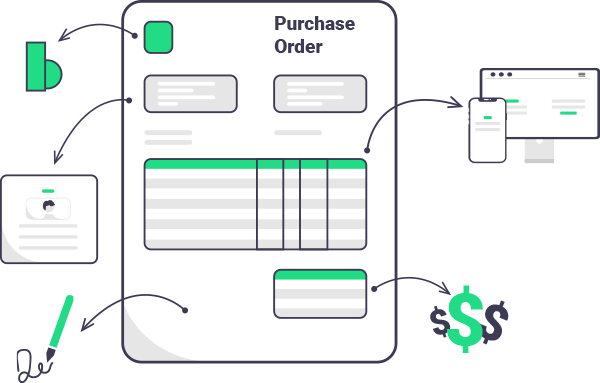

As a small business owner, you may need to send and receive purchase orders and official documents confirming your intention to buy goods or services from a supplier or sell goods or services to a customer.
For instance, ecommerce sellers might send a purchase order to their supplier to confirm how many units they’re buying this month and get a purchase order from a customer for the same reason. Likewise, freelancers and online service providers might receive a purchase order from their clients for the services they will provide and send a purchase order for supplies they need.
The purchase order contains important information such as the buyer’s and seller’s names and addresses, a description of the goods or services being purchased or sold, the quantity and price of the items, the delivery date, and the payment terms. Once the purchase order is accepted and confirmed, it becomes a legally binding contract of sale.
Understanding purchase orders is essential to managing your small business finances, as they ensure that both parties are clear on the terms of the sale and provide a record of the transaction. Therefore, knowing how to use purchase orders to manage your finances more effectively in your business is important.
What details are included in purchase orders?


Purchase orders include the following:
When creating a purchase order, including all necessary information for a smooth transaction is essential. Here are key details to have:
- A unique PO number: helps identify the purchase order throughout the process.
- Date of the purchase: for record-keeping purposes.
- Buyer’s details: name, address, and contact information.
- Vendor’s details: name, address, and contact information.
- List of products, quantities, and agreed-upon price: crucial information.
- Delivery address: double-check for accuracy.
- Required delivery date: ensure the seller can meet the deadline.
- Buyer’s signature: legally binding confirmation.
By including these details in your purchase order, both parties will clearly understand the transaction and avoid any confusion or disputes in the future.
What is an invoice?
In the small business world, consultants, freelancers, and contractors all rely on invoices to get paid for their services. But what exactly is an invoice?
In short, an invoice is a vital accounting document that a seller sends to their customer requesting payment after fulfilling a purchase request. It’s a critical financial puzzle piece, serving as a formal transaction record between the seller and buyer.
However, not all invoices are created equal. There are different types of invoices that businesses can use, depending on the specifics of the transaction.
For example, some invoices may include additional details, such as taxes or shipping costs, while others may be used for recurring payments or tracking time and materials on a project.
Regardless of the type of invoice used, it’s essential to understand its purpose and how to use it effectively. Then, with the right invoicing practices, small business owners can ensure timely and accurate payments, maintain accurate financial records, and avoid customer disputes.


Invoicing is an essential part of managing finances for small businesses. International sellers often include an international invoice with shipments to help buyers track goods through customs, while freelancers and service providers use invoices to get paid after completing a job.
What information should I include in my invoices?
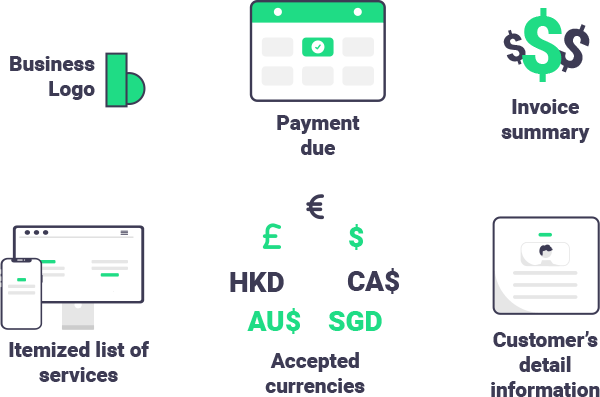

When creating an invoice, there are specific details you should always include to ensure you get paid on time and keep your business finances organized. Here’s a checklist of what to include in your invoices:
- Your business details include your company name, address, and contact information so that your customer knows who they’re doing business with.
- Your customer’s business details include your customer’s name, address, and contact information to record who you’re invoicing and how to reach them.
- The date you issued the invoice: This is the date you sent the invoice to your customer, and it’s essential to keep track of it for record-keeping purposes.
- A list of products or services you provided: This should be a detailed list of the products or services you provided, along with the quantity and price of each item.
- Shipping costs: If applicable, include any shipping or handling fees associated with the order.
- Taxes: Make sure to include applicable taxes, such as sales tax or VAT, so your customer knows what they’re paying for.
- Any applicable discounts: Include deals or promotions on the invoice if you’re offering them.
- The final price is the total amount due, including any taxes and discounts.
- Payment due date: Include a clear due date for payment to avoid any confusion or delays.
- Your preferred payment method: Let your customer know how you want to receive payment, whether by check, bank transfer, or online payment service.
- Your local bank details and IBAN for ACH bank debit, SWIFT, and wire transfers: This is important information your customer will need to pay, so make sure it’s listed on the invoice.
By including these details in your invoices, you can ensure that your customers clearly understand what they’re paying for and how to pay you, helping you manage your finances more effectively.
Purchase order vs invoice: what are the similarities?
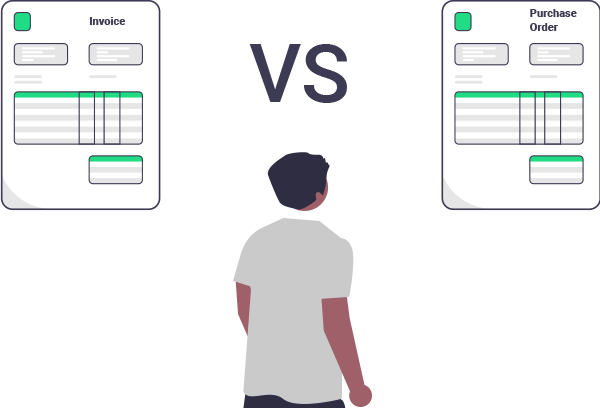

While purchase orders and invoices may seem different in purpose, they share some commonalities that make them essential to effective financial management. Here are some of the key similarities between purchase orders and invoices:
- Itemized pricing: Both purchase orders and invoices provide an itemized list of the goods or services sold and the agreed-upon pricing for each item. This helps to ensure that both parties are clear on the terms of the transaction and can avoid any misunderstandings or disputes down the line.
- Shipping details and buyer and seller information: Both purchase orders and invoices include shipping details, such as the delivery address and expected delivery date, as well as the buyer’s and seller’s names and addresses. This helps to ensure that the right products are delivered to the right place and that both parties can stay in contact throughout the purchasing process.
- Legally binding documents: Both purchase orders and invoices are legally binding documents that record the transaction. This means that they can be used in court if necessary and can help to protect both parties in case of disputes or issues with payment.
- Unique accounting number: Both purchase orders and invoices have a unique accounting number that helps to identify the transaction and track it throughout the purchasing process. This is important for record-keeping purposes and can help document all transactions properly.
- Sales and payment tracking: Both purchase orders and invoices provide a way to track sales and payments, essential for effective financial management. Small business owners can avoid cash flow issues and keep their finances in order by keeping track of all transactions and ensuring that payments are made on time.
Purchase order vs invoice: what are the differences?
The difference between a purchase order and an invoice is simple: the purchase order is sent by the customer to confirm an order before the sale, while the vendor sends the invoice after the sale to request payment. The timing is crucial, as the purchase order clarifies what the order entails, while the invoice documents the sale and requests payment.
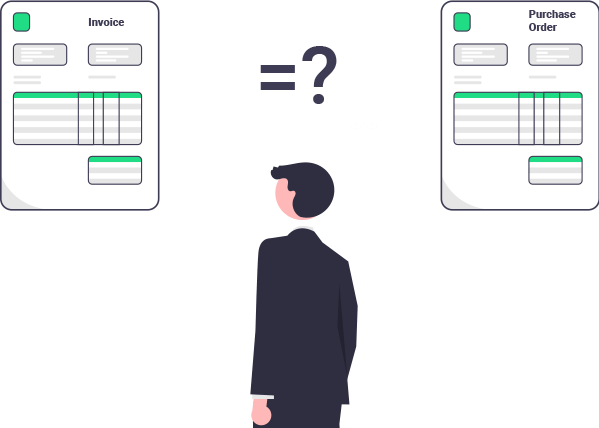

You want to ensure everything is crystal clear when you send a purchase order. That’s why you’ll include all the details you can think of, such as the exact color, size, and style of a product or a breakdown of the specific services. It’s like giving the seller a map to follow so they know what you need.
But when it comes to invoices, things are a little simpler. You’ll list the quantity and name of the product or service, but you won’t need to go into as much detail as you did in the PO. That’s because the seller already knows what you need – they’ve already provided it!
One of the biggest differences between a PO and an invoice is the payment details. An invoice will have the seller’s payment information, bank details, and due date. That way, you know exactly how much you need to pay and when you need to pay it.
| Purchase order | Invoice |
| Sent before the sale is completed | Sent after the sale is completed |
| Sent by the buyer | Sent by the seller |
| Issued to confirm the order | Issued to request payment |
| Has a detailed description of the goods/services | Has a list of quantity and price of goods and services |
| Includes a delivery date | Includes a payment date |
| Used for sales tracking | Used for payment tracking |
Why do I need a purchase order?
As a small business owner, you might wonder why you need a purchase order. Well, purchase orders are necessary for finalizing sales and setting clear expectations. In addition, they help prevent misunderstandings about orders and avoid duplicate orders.
In larger companies, purchase orders are essential for maintaining control over purchasing. Plus, they allow you to manage your inventory effectively by providing a record of past purchase orders, giving insight into how often you need to replenish your stock.
Whether you’re a small business or a larger company, purchase orders are crucial for managing your inventory, preventing confusion, and ensuring smooth transactions. Our guide is geared towards a clear understanding of purchase orders for seamless business management.
Why do I need an invoice?
Invoicing might seem tedious, but it’s essential for payment reconciliation and keeping track of your finances. Think of an invoice as a detailed receipt for your hard work. With an invoice, you can clearly state what you’ve done, how much it costs, and when payment is due.
Using invoices alongside purchase orders helps you track your transactions and ensure you’re getting paid for your work or products you’ve sold. Plus, invoices record your sales and payments, which is essential for staying organized and reconciling your accounts.
So, don’t underestimate the power of an invoice! Using them regularly will streamline your payment process and keep your finances in order.
Best tips for preparing a purchase order


-
- Show off your brand by including your logo and business branding on your purchase orders.
- Keep a copy of every purchase order you send. This way, you’ll have a complete record of your purchases for your accounting records.
- Make sure each purchase order has a unique number so you can easily track it.
- Write terms and conditions that are easy to understand, so both parties are clear on what’s expected.
- Include any specific requests, like a hard delivery date or customization requests, so the vendor knows exactly what you need.
- Build a database of vendors so you can easily pull their details into your purchase orders.
- Use a purchase order template to ensure all your purchase orders are formatted correctly and consistently.
- Send your purchase orders electronically to streamline record keeping and make it easy for vendors to receive them.
- Find an online purchase order builder that automates parts of the process, saving you time and hassle.
Best advice for preparing a professional invoice
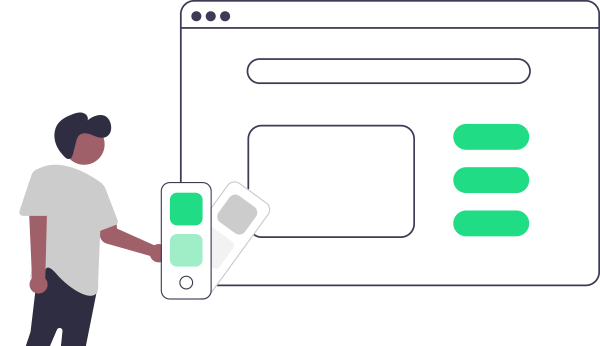

- Include your logo and business branding to create a professional and consistent image.
- Always include the purchase order number, if applicable, for reference and to avoid any confusion.
- Specify the currency for payment, particularly for international clients and cross-border payments.
- Detail any fees for late payment to encourage prompt payment.
- Keep a copy of every invoice you send for your accounting records and follow up on late payments to ensure you receive payment.
- Accept as many payment types as possible to make it easier for your clients to pay you.
- Use an electronic payment solution, such as Payoneer or other reputable online payment processors, and include a “pay now” button to allow clients to pay immediately with their preferred method.
- Find an online invoice builder that automates the process and saves you time.
- Send your invoice electronically to streamline record keeping and ensure prompt delivery.




